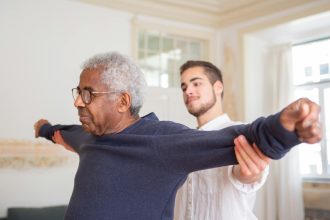Recovering from a brain injury is not a single event but a journey that unfolds over weeks, months, and often years. The path is rarely predictable. Some survivors improve quickly, while others progress slowly, with plateaus or setbacks along the way. What remains consistent is that recovery happens in stages, each with its own goals, challenges, and needs for support.
Understanding these stages helps survivors and families prepare for what lies ahead. It also shows that while healing may take time, progress is always possible—even long after the initial injury.
The Acute Stage: Emergency and Early Stabilization
The first stage of recovery begins immediately after the injury, often in the emergency room or intensive care unit. The focus here is on survival and stabilization. Doctors work to stop bleeding, reduce swelling, maintain oxygen supply, and prevent further damage.
Survivors may be unconscious, in a coma, or only minimally responsive. Families often feel overwhelmed, uncertain whether their loved one will wake up or what life will look like afterward. Medical teams provide continuous monitoring, and decisions are often made quickly to protect the brain.
Even at this early stage, small signs of responsiveness—such as opening eyes or following simple commands—are meaningful milestones.
The Sub-Acute Stage: Early Recovery
Once the survivor is medically stable, attention shifts from life-saving care to early rehabilitation. This stage usually takes place in a hospital ward, rehabilitation center, or skilled nursing facility. The goals are to:
- Begin physical therapy to prevent stiffness and maintain muscle strength.
- Start speech or occupational therapy, if possible, to encourage communication and self-care.
- Manage complications such as seizures, infections, or hydrocephalus.
- Provide support for families adjusting to new routines and uncertainties.
Survivors may show gradual improvements—becoming more alert, responding to voices, or regaining simple movements. These changes may seem small but represent critical steps toward long-term recovery.
The Rehabilitation Stage: Regaining Function
Rehabilitation becomes the focus once survivors are stable enough to participate in therapy. This stage may last weeks, months, or even years, depending on the severity of the injury. It often takes place in a specialized rehabilitation center or outpatient program.
Therapies at this stage include:
- Physical therapy to restore strength, balance, and mobility.
- Occupational therapy to rebuild independence in daily activities.
- Speech and language therapy for communication and swallowing.
- Cognitive rehabilitation therapy for memory, attention, and problem-solving.
- Psychological support to address depression, anxiety, or personality changes.
Progress is often slow and uneven. Survivors may regain some abilities quickly while others take months to improve. Families learn to celebrate small victories—walking a few steps, speaking a clear sentence, or remembering a familiar face—as signs that the brain is healing.
The Long-Term Stage: Adaptation and Community Reintegration
Recovery does not end when formal rehabilitation stops. The long-term stage is about adapting to new realities and continuing progress in daily life. Survivors may return to work or school, resume hobbies, or explore new ways of living with the changes brought by the injury.
Some challenges—such as fatigue, memory problems, or emotional regulation—may persist. Assistive technology, support groups, counseling, and vocational training all help survivors maintain independence and quality of life.
Families also continue to play a crucial role, providing encouragement, adjusting expectations, and ensuring that the survivor remains engaged in meaningful activities.
Plateaus and Late Recovery
It is common for survivors to experience plateaus, periods when progress seems to stop. This can be discouraging, but it does not mean recovery is over. Research shows that the brain retains the ability to adapt and rewire itself—called neuroplasticity—long after the initial injury. With ongoing therapy, practice, and support, survivors may continue to make gains years down the line.
Conclusion
Brain injury recovery is a long and unpredictable process. It begins with emergency stabilization, moves through early and intensive rehabilitation, and extends into lifelong adaptation. Each stage brings challenges, but also opportunities for progress and growth.
While no two recoveries look exactly the same, one truth is universal: with time, therapy, and support, survivors can rebuild independence, identity, and hope.






